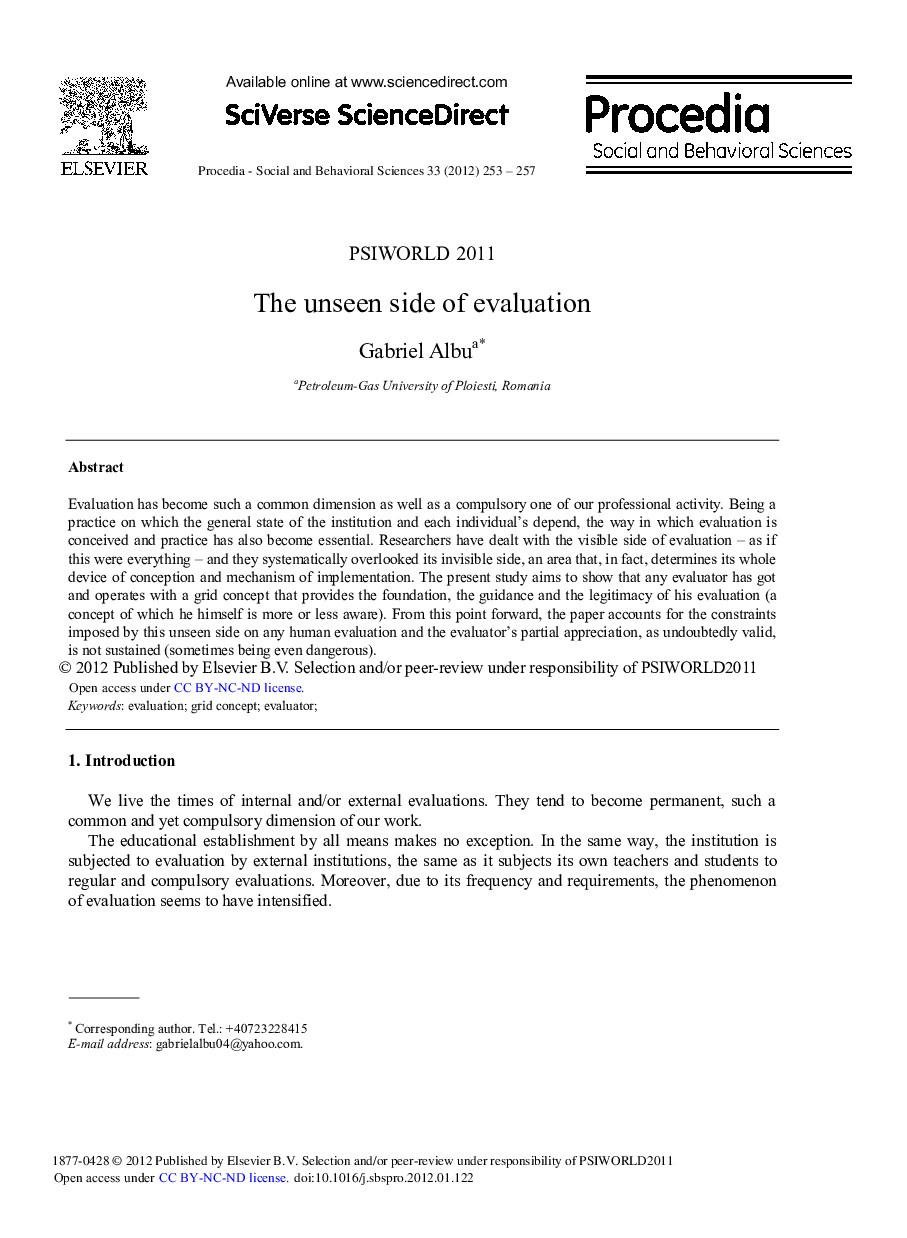| Article ID | Journal | Published Year | Pages | File Type |
|---|---|---|---|---|
| 1122810 | Procedia - Social and Behavioral Sciences | 2012 | 5 Pages |
Evaluation has become such a common dimension as well as a compulsory one of our professional activity. Being a practice on which the general state of the institution and each individual's depend, the way in which evaluation is conceived and practice has also become essential. Researchers have dealt with the visible side of evaluation – as if this were everything – and they systematically overlooked its invisible side, an area that, in fact, determines its whole device of conception and mechanism of implementation. The present study aims to show that any evaluator has got and operates with a grid concept that provides the foundation, the guidance and the legitimacy of his evaluation (a concept of which he himself is more or less aware). From this point forward, the paper accounts for the constraints imposed by this unseen side on any human evaluation and the evaluator's partial appreciation, as undoubtedly valid, is not sustained (sometimes being even dangerous).
